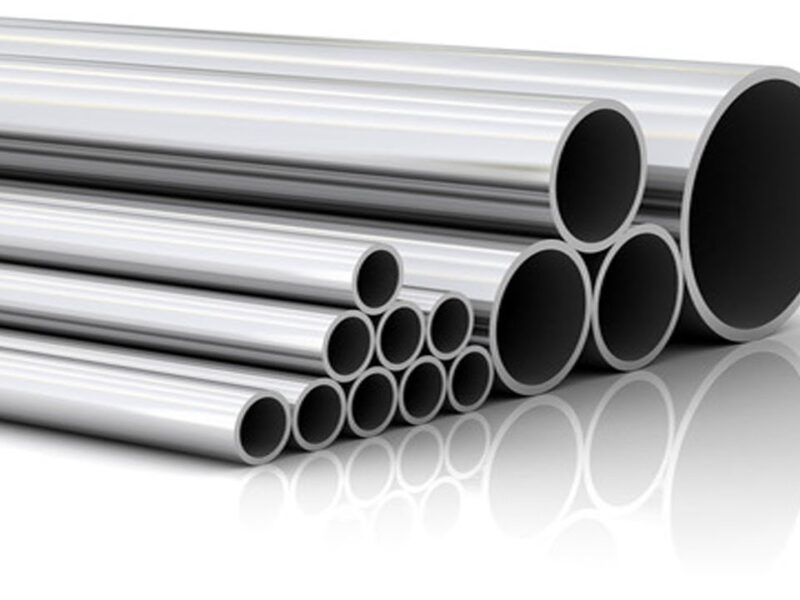
Characteristics and applications of steel 45: high strength index and technical characteristics
Steel is a deformed iron alloy (forged) with carbon and other elements. It is obtained from the warehouse, which has room for cast iron and scrap steel, processed in open-hearth furnaces, oxygen converters and electric furnaces. If there is more iron in the alloy 2,14% carbon, then it is cast iron.
Classification of steel
In the market 99% all steel is a structural material in a broad sense. This group includes steels for the construction of buildings, production of machine parts, elastic elements, tools, as well as for special working conditions, having certain indicators, example, heat-resistant, stainless and others.
The main qualities of the material are:
-
Strength, which is characterized by the ability to withstand sufficient stress.
- Plasticity, this characteristic allows to maintain deformations without damage of destruction at production of designs, and at the points of overload during their operation.
- Viscosity helps absorb external forces, prevents the spread of cracks.
- Heat resistance and cold resistance.
- Elasticity and hardness.
Steel and alloys are classified:
-
By chemical composition, structural.
- By quality. This indicator is influenced by the method of production and the content of harmful impurities.
- According to the degree of deoxidation and solidification of the metal in the mold.
- By application.
Chemical composition
Depending on the carbon content is divided into groups:
- carbon less than 0.3% C - low carbon.
- Medium carbon, when its from 0,3 to 0,7% WITH.
- More 07 %C - high carbon.
To improve the technological properties of the material, the steel is alloyed. What does it mean? In addition to the usual impurities in its composition are added in certain combinations of alloying elements. Usually the best properties appear, when doped complex.
In alloy steels, the classification is due to the total percentage of impurities contained in it:
-
Low alloy, in which less 2,5%.
- Medium alloy - from 2,5% to 10%.
- High-alloy - above 10%.
Structural composition
Alloy steels are divided into types by structural analysis:
- In the identified form - ledeburite, ferrite, pre-eutectoid, eutectoid, austenitny.
- In normalized form - authentic, martensitic, pearlite.
The perlite class is characterized by a low content of alloying elements. It includes alloy and carbon steels. Martensitic includes steels with a higher percentage of alloying substances. The authentic class includes materials with a high value of alloying elements.
The content of impurities
According to the method of production and content of impurities, this material is divided into 4 groups:
- Normal quality. The chemical composition is carbon. They are smelted with oxygen or in open-hearth furnaces. These steels are inexpensive and inferior in properties to other classes.
-
Qualitative. Chemical properties are carbon or doped. The same, as the previous type, smelted in converters or in open-hearth furnaces, at the same time stricter requirements to structure of charge are observed, melting and bottling works.
- High quality. This type is smelted, usually, in electric furnaces. Very high quality steel is made thanks to electric furnaces with electroslag remelting. Other advanced methods are also used, aimed at improving the purity of non-metallic inclusions (sulfur and phosphorus).
- Thanks to electroslag remelting, which effectively cleans from sulfides and oxides, high-quality steels are created. Such steels are only alloyed. They are processed in electric furnaces, special methods of electrometallurgy are applied to them.
Application
Chrome-bearing ball bearings are used to make bearings. This species has proven itself, how strong, solid and contact-resistant material.
Some types of steel have elastic deformation, therefore they are used for springs, springs and other products. Many of them must withstand cyclic loads. Therefore, the main requirements for these types of steel are high values of elasticity, fluidity, endurance, plasticity and resistance to brittle fracture are also required.
High-strength steels have strength with the required ductility, low sensitivity to incisions, low thresholds of cold brittleness, excellent weldability, high resistance to brittle fracture.
Steel 45
This steel alloy differs from others by a set of special characteristics, which are unique to this brand. It differs in application and high functionality, unique composition of chemical compounds, a set of foundry and other production parameters.
Application
Steel under the number 45 is made in accordance with all requirements of the Guest. Shafts of all kinds are made of it, bandages, disks, cylinders of different types, cams of various shapes. Essentially, used for structures and devices, whose functional purpose is resistance to huge loads, where it is necessary to show the increased indicators of wear resistance, strength, insensitivity to corrosion.
As part of steel brands 45 in accordance with GOST are the following elements, as phosphorus, arsenic, copper, nickel, manganese and other substances. This steel has a large set of mechanical characteristics. Therefore, it is able to withstand almost all climatic and temperature fluctuations. Experience this type of steel at a temperature range of 200 to 600 degrees.
Specifications
This steel belongs to those materials, which are difficult to weld, however, at the same time it has no capacity. This feature often has a very good effect on the manufacture of complex shapes and parts. Due to the characteristics of this steel, the toughness of its products depends entirely on the thickness of the sheet taken, and the thickest source will be of the greatest importance. But, even despite this setting, it is possible to tell with confidence, that almost any design, made of steel of this brand, will withstand almost any, including the most intense effects.
This was made possible by the processing methods used, as well as the production process, which is developed in accordance with GOST. Certainly, the world has not yet created materials, possessing infinite endurance to various influences, therefore, this metal in this sense is no exception. But due to the high properties of raw materials, from which the material is produced, he has excellent performance.




